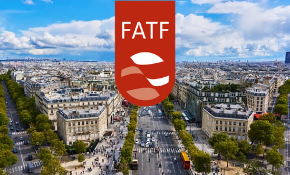Money laundering is one of the largest crimes the global economy has been dealing with for centuries, and it is growing. According to the International Monetary Fund (IMF), the money laundering rate is between 2-5 percent of GDP. This ratio corresponds to an enormous amount of the world's total money. For this reason, money laundering has serious negative socio-economic consequences. For this reason, global and local regulators draft regulations to minimize these effects and prevent money from money.
How Does Money Laundering Work?
Financial institutions such as banks and all organizations at risk of money laundering must comply with these regulations; otherwise, they may be exposed to severe money laundering risks and penalties. Throughout history, many institutions, especially banks, have not complied with these regulations. Still, some banks' money laundering scandals and penalties were never forgotten and engraved in memory. This blog examines the top five memorable money laundering scandals and penalties.
Wachovia Bank
Founded on June 16, 1879, as Wachovia National Bank, Wachovia Bank had become one of the biggest financial services companies in the United States. Wachovia offers its customers banking, brokerage, asset and wealth management, corporate and investment banking products and services, and nationwide retail brokerage, mortgage loan, and auto financing services.
In 2008, Wachovia Corporation was acquired by Wells Fargo & Company to create North America's most comprehensive distribution system for financial services. Once one of the largest U.S. banks, Wachovia is unfortunately responsible for the biggest money-laundering event. In 2010, it was found that the bank allowed drug cartels in Mexico between 2004 and 2007 to allow money laundering close to
USD 390 billion
through its branches. Drug cartels used U.S. dollars from drug sales in the U.S. to smuggle them across the Mexican border.
Later, they used money exchangers to deposit the money into bank accounts in Mexico. Legal requirements regarding the origin of funds were not the same level as current standards. Later, the money was returned to Wachovia's U.S. accounts, and the bank could not control the source of these funds. In addition, drug cartels have used Wachovia's mass cash service to send the banknotes back to the United States.
Someone who made this incident aware, Martin Woods, realized that his employer helped launder the drug trade profits in Mexico. Woods, who joined Wachovia Bank as a money laundering reporting officer in 2005, made his first severe warnings during the 2006 Lebanon war following reports that Hezbollah was using Wachovia accounts. However, surprisingly, he received condemnation for his attempts to freeze suspicious accounts. That year also identified "a series of suspicious transactions" related to Mexican exchange offices.
There were deposits of passenger checks with insufficient or no credentials on them and containing large amounts of sequential numbers - more sequential numbers than any innocent person would need - to an educated eye that looked like suspicious signatures. Woods then published a series of "
suspicious activity reports" (SAR)
, demanding that the parties mentioned above be blocked and many sequentially numbered passenger checks from Mexico be blocked.
In April 2006, Mexican military soldiers found 128 safes worth $ 100 million filled with 5.7 tonnes of cocaine on a newly arrived jet in the port city of Ciudad del Carmen. A twenty-two-month study by agents of the DEA, IRS, and others found that the smugglers bought the plane with the money they laundered through Wachovia. Between 2004 and 2007, the investigation revealed that billions of dollars of wire transfers, traveler's checks, and bulk cash shipments were transferred to Wachovia accounts through Mexican exchanges. When this money laundering scandal emerged, Wachovia managed to escape prosecution by paying a $ 160 million fine and promising to increase AML procedures.
Standard Chartered Bank
S t andard Chartered is a British banking and financial services company founded in 1969, headquartered in London, England. In 2004, Standard Chartered had some problems with the Federal Reserve and the New York regulator due to the lack of AML practices. During 2005 and 2006, the bank broke sanctions against Iran by ignoring regulatory agreements and working with Iranians. Standard Chartered was penalized $ 670 million in 2012 for its violations, but the fine had little effect on stopping its illegal practice.
In 2012, Standard Chartered was accused by New York's Department of Financial Services (DFS) of the Iranian government's failures in anti-money laundering controls that helped clear the U.S. regulations for $ 265 billion .
In addition, the bank has been accused of violating US sanctions on Burma, Libya, and Sudan. In 2019, the Federal Reserve decided to stop and give up on Standard Chartered as it continues to fail to implement AML practices and ignores sanctions against Zimbabwe, Burma, Iran, Sudan, Cuba, and Syria. The Financial Conduct Authority (FCA) has also seen serious deficiencies in the bank's AML controls, particularly due to rigorous client-related controls in the U.K. Thereupon, both the U.K. and U.S. authorities fined Standard Chartered a total of $ 1.1 billion.
Danske Bank
Danske Bank's history dates back to 1871. The bank grew and merged with banks in the Nordic region. As a result, today, Danske Bank is a strong Scandinavian bank with local roots and bridges to the rest of the world. Danske Bank took over Sampo Bank in Estonia in 2007, and major problems started to arise. After just a few months, not much, the bank was taken under control by the Estonian finance minister and began receiving warnings from the Russian central bank that the branch was being used for transactions of suspicious size.
In 2010, Danske Bank's board of directors was aware of the large number of deposits coming from Russia, but they were not disturbed by what happened. The bank continued to accept large deposits with some intervention. As of 2013, 99% of banks' profits came from non-residents, most from Russia or post-Soviet countries. At the end of 2013, a report came to senior executives, and although this issue was discussed again, nothing happened. Until 2016, Danske Bank did not stop doing business with non-residents, and in 2017 this issue began to attract attention. The bank had to stop doing business in Estonia; the Danish authorities blamed several managers for being fined $ 2 million.
As a result, Danske Bank, Denmark's largest bank, began to be identified as Europe's biggest scandal with the European Commission's $ 228 billion money-laundering lawsuits. In addition, the Bank's Estonian branch allegedly had thousands of suspicious customers who took advantage of the bank's weak controls to carry out illegal transactions worth about
U.S. $ 228 billion
from 2007-to 2015.
Nauru
Nauru is located in Australia and is known as the smallest island country in the world. Nauru is famous for mining and has received a large payment from Australia for its profits from mining, making it one of the richest nations in the world. In the 1990s, due to a corrupt government, Nauru transformed itself into a tax haven. Russian criminals took advantage of this situation and started laundering money through shell banks. Nauru did not authenticate banking customers and did not pursue the necessary question s.
As a result, Nauru helped Russian criminals laundered an estimated
$ 70 billion
in 1998.
In 2002, the U.S. treasury designated Nauru as a money-laundering state and imposed harsh sanctions to rival those settled in Iraq. Until 2005, Nauru passed
anti-money laundering (AML)
and tax haven laws with the help of
the Financial Action Task Force (FATF)
.
Bank of Credit and Commerce International (BCCI)
Founded in Luxembourg in 1972 by Pakistani businessman Agha Hassan Abedi, BCCI Banka, while establishing its headquarters in Belgium, it soon expanded globally and operated mainly outside the U.K . However, they were involved in fraud and money laundering activities of up to U.S. $ 23 billion . In 19 90, allegations surfaced following an investigation by Price Waterhouse that BCCI falsified transactions, and it turned out that large, unregistered deposits were made in the bank. Some figures were accused of money laundering at BCCI.
It has also been alleged that the bank uses a number of sophisticated techniques such as shell companies, privacy havens, commissions, and bribery to avoid regulatory scrutiny. As a result, BCCI was closed in 1991 by the Bank of England in the U.K. and elsewhere. They then sued the Bank of England, claiming that they were reckless with BCCI regulations and should see warning signs sooner. The lawsuit against the Bank of England concluded.
As a result, many banks have been subjected to money-laundering scandals intentionally or unintentionally throughout history. Regulators have very heavy regulations to prevent these crimes, but it is clear that there are still some shortcomings in optimal compliance with these regulations.





